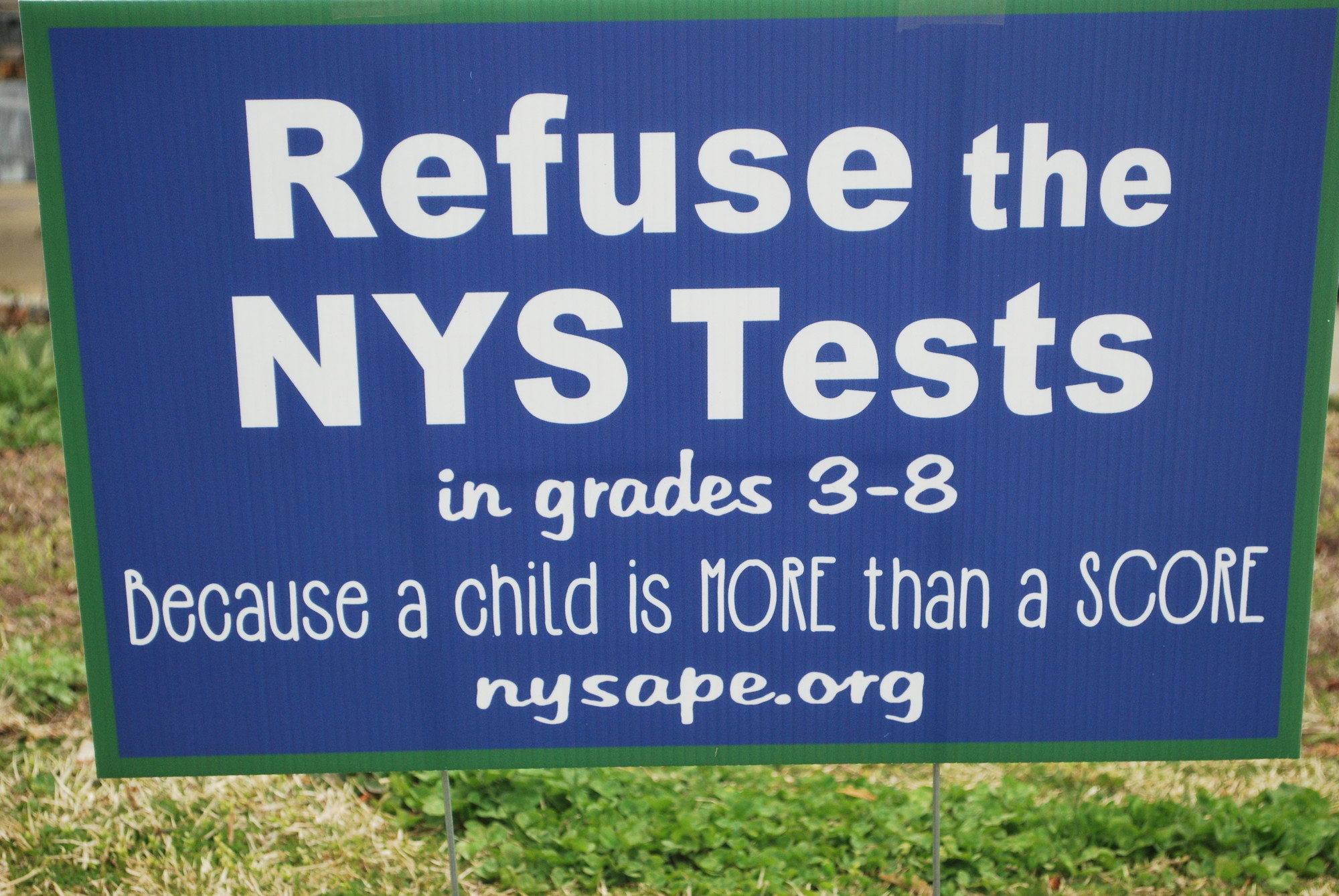Opt-out numbers grow on Long Island
Hewlett-Woodfmere and Lawrence school districts split on impact of state testing
Opting out of the state standardized tests in English Language Arts given to students in grades three through eight last week and the math exams this week has grown on Long Island.
Based on the most recent figures, 89,000 students have opted out of the tests through Nassau and Suffolk counties. In the Five Towns, Hewlett-Woodmere had 61 percent of its 1,333 students who should take the ELA exam opt-out. Last year it was 46 percent opting out of the ELA and 50 percent in math. In Lawrence, 25 percent of the 1,138 students eligible to take the ELA did not. That was up from 11 percent.
Parents have chosen not to have their children take the tests for a variety of reasons ranging from the anxiety it cause the students to not seeing the educational value of the exams.
The tests have also become a center of controversy in the role they play as part of the teacher evaluation package that was negotiated between educators and their school districts. Add to that the grading change in the tests a few years ago, and then a shift in direction after New York adopted the Common Core Learning Standards, coupled with the firestorm of protest over Common Core and now a state moratorium on using the exams as part of teacher evaluations, and the educational landscape could look confusing to parents.
Ric Stark, president of the Hewlett-Woodmere Faculty Association, said that he doesn’t think parent dissatisfaction with the state exams is related to their use for teacher evaluations, but that may have been the issue that made them pay attention.
“I believe that many parents simply have come to the conclusion that the current testing system does nothing to help their children,” Stark said. “When and if state tests become what they should be ¬– a way to gauge student progress and identify kids who need extra attention – then opt-out rates will decrease. Not before.”
Though the number of students opting out in Lawrence more than doubled, Dr. Ann Pedersen, the district’s deputy superintendent who oversees curriculum and instruction, said that the state tests provide them with the information they need to address learning gaps and hopefully improve academic achievement.
“We use a BOCES service called data warehouse to do careful analysis of the data,” Pedersen said. “Teachers in the next grade level get excellent instructional information that informs their teaching.”
Pedersen said that the State Education Department told Lawrence officials that the results would be announced earlier than usual so the district can apply what they learn from this year’s tests to next school year’s instruction.
Mary Watkins, a parent of a Lawrence Middle School eighth-grader said she offered her daughter the option of opting out. Watkins said that her daughter chose to take the state exams because she “wanted to see if she could do it.” “She knows what she knows,” Watkins said.
“[The daughter’s] confidence in the skills she has learned and the ability to try challenges speaks to a growth mind set,” Pedersen said.
Hewlett-Woodmere officials said they do not rely on the state tests to measure their students’ academic achievement. They use a computer-based assessment, Northwest Evaluation Association, to guide their instruction, along with the [Columbia University] Teachers College Reading and Writing Project to monitor students’ progress and teacher-based evaluations.
“I continue to believe that the diagnostic value of New York State Education Department testing has diminished greatly,” said Mark Secaur, the district’s assistant superintendent for curriculum and instruction. “The increase in the number of students not taking the state exams is a clear sign that the state has not done enough to reestablish confidence in the NYSED’s three to eight testing program.”

 66.0°,
Shallow Fog
66.0°,
Shallow Fog 




